Organs that Secrete Hormones: Endocrine Glands & Their Hormones
What are the organs that have secondary endocrine functions? What are the four major neuroendocrine organs in the body? Get the answers and more in this comprehensive article.
Organs with Secondary Endocrine Functions
There are several organs whose primary functions are non-endocrine but that also possess endocrine functions. These include the heart, kidneys, intestines, thymus, gonads, and adipose tissue.
The Heart’s Endocrine Function
The heart possesses endocrine cells in the walls of the atria that are specialized cardiac muscle cells. These cells release the hormone atrial natriuretic peptide (ANP) in response to increased blood volume. High blood volume causes the cells to be stretched, resulting in hormone release. ANP acts on the kidneys to reduce the reabsorption of Na+, causing Na+ and water to be excreted in the urine. ANP also reduces the amounts of renin released by the kidneys and aldosterone released by the adrenal cortex, further preventing the retention of water. In this way, ANP causes a reduction in blood volume and blood pressure, and reduces the concentration of Na+ in the blood.

Endocrine Functions of the Gastrointestinal Tract
The gastrointestinal tract produces several hormones that aid in digestion. The endocrine cells are located in the mucosa of the GI tract throughout the stomach and small intestine. Some of the hormones produced include gastrin, secretin, and cholecystokinin, which are secreted in the presence of food, and some of which act on other organs such as the pancreas, gallbladder, and liver. They trigger the release of gastric juices, which help to break down and digest food in the GI tract.
Endocrine Functions of the Kidneys
While the adrenal glands associated with the kidneys are major endocrine glands, the kidneys themselves also possess endocrine function. Renin is released in response to decreased blood volume or pressure and is part of the renin-angiotensin-aldosterone system that leads to the release of aldosterone. Aldosterone then causes the retention of Na+ and water, raising blood volume. The kidneys also release calcitriol, which aids in the absorption of Ca2+ and phosphate ions.

Erythropoietin (EPO) and the Kidneys
Erythropoietin (EPO) is a protein hormone that triggers the formation of red blood cells in the bone marrow. EPO is released in response to low oxygen levels. Because red blood cells are oxygen carriers, increased production results in greater oxygen delivery throughout the body. EPO has been used by athletes to improve performance, as greater oxygen delivery to muscle cells allows for greater endurance. Because red blood cells increase the viscosity of blood, artificially high levels of EPO can cause severe health risks.
Endocrine Functions of the Thymus
The thymus is found behind the sternum; it is most prominent in infants, becoming smaller in size through adulthood. The thymus produces hormones referred to as thymosins, which contribute to the development of the immune response.
Adipose Tissue and Leptin
Adipose tissue is a connective tissue found throughout the body. It produces the hormone leptin in response to food intake. Leptin increases the activity of anorexigenic neurons and decreases that of orexigenic neurons, producing a feeling of satiety after eating, thus affecting appetite and reducing the urge for further eating. Leptin is also associated with reproduction. It must be present for GnRH and gonadotropin synthesis to occur. Extremely thin females may enter puberty late; however, if adipose levels increase, more leptin will be produced, improving fertility.

The Four Major Neuroendocrine Organs
According to the Cleveland Clinic, the four major neuroendocrine organs are the hypothalamus, pituitary, thyroid, and adrenal glands. The remaining four are the parathyroid, pancreas, pineal, and ovaries for women or testes for men.
The Hypothalamus: The Control Center
Often considered the control center of the endocrine system, the hypothalamus is in the brain. It controls and coordinates the endocrine system, instructing the other glands when to produce hormones. The hypothalamus controls moods, hunger, sleep patterns, and other vital functions.
Organs with Secondary Endocrine Functions
Learning Outcomes
- Identify different organs that have secondary endocrine functions
There are several organs whose primary functions are non-endocrine but that also possess endocrine functions. These include the heart, kidneys, intestines, thymus, gonads, and adipose tissue.
The heart possesses endocrine cells in the walls of the atria that are specialized cardiac muscle cells. These cells release the hormone atrial natriuretic peptide (ANP) in response to increased blood volume. High blood volume causes the cells to be stretched, resulting in hormone release. ANP acts on the kidneys to reduce the reabsorption of Na+, causing Na+ and water to be excreted in the urine. ANP also reduces the amounts of renin released by the kidneys and aldosterone released by the adrenal cortex, further preventing the retention of water. In this way, ANP causes a reduction in blood volume and blood pressure, and reduces the concentration of Na+ in the blood.
The gastrointestinal tract produces several hormones that aid in digestion. The endocrine cells are located in the mucosa of the GI tract throughout the stomach and small intestine. Some of the hormones produced include gastrin, secretin, and cholecystokinin, which are secreted in the presence of food, and some of which act on other organs such as the pancreas, gallbladder, and liver. They trigger the release of gastric juices, which help to break down and digest food in the GI tract.
While the adrenal glands associated with the kidneys are major endocrine glands, the kidneys themselves also possess endocrine function. Renin is released in response to decreased blood volume or pressure and is part of the renin-angiotensin-aldosterone system that leads to the release of aldosterone. Aldosterone then causes the retention of Na+ and water, raising blood volume. The kidneys also release calcitriol, which aids in the absorption of Ca2+ and phosphate ions.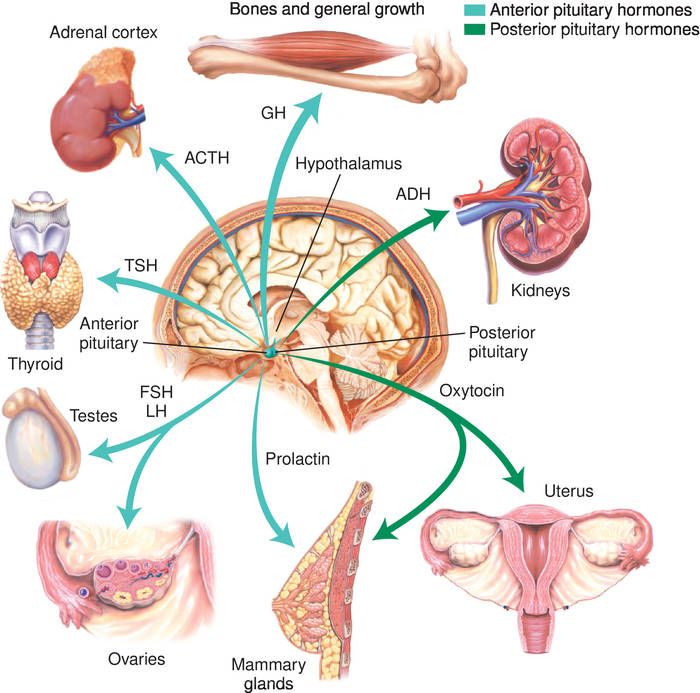 Erythropoietin (EPO) is a protein hormone that triggers the formation of red blood cells in the bone marrow. EPO is released in response to low oxygen levels. Because red blood cells are oxygen carriers, increased production results in greater oxygen delivery throughout the body. EPO has been used by athletes to improve performance, as greater oxygen delivery to muscle cells allows for greater endurance. Because red blood cells increase the viscosity of blood, artificially high levels of EPO can cause severe health risks.
Erythropoietin (EPO) is a protein hormone that triggers the formation of red blood cells in the bone marrow. EPO is released in response to low oxygen levels. Because red blood cells are oxygen carriers, increased production results in greater oxygen delivery throughout the body. EPO has been used by athletes to improve performance, as greater oxygen delivery to muscle cells allows for greater endurance. Because red blood cells increase the viscosity of blood, artificially high levels of EPO can cause severe health risks.
The thymus is found behind the sternum; it is most prominent in infants, becoming smaller in size through adulthood. The thymus produces hormones referred to as thymosins, which contribute to the development of the immune response.
Adipose tissue is a connective tissue found throughout the body. It produces the hormone leptin in response to food intake. Leptin increases the activity of anorexigenic neurons and decreases that of orexigenic neurons, producing a feeling of satiety after eating, thus affecting appetite and reducing the urge for further eating. Leptin is also associated with reproduction. It must be present for GnRH and gonadotropin synthesis to occur. Extremely thin females may enter puberty late; however, if adipose levels increase, more leptin will be produced, improving fertility.
Leptin is also associated with reproduction. It must be present for GnRH and gonadotropin synthesis to occur. Extremely thin females may enter puberty late; however, if adipose levels increase, more leptin will be produced, improving fertility.
In Summary: Organs with Secondary Endocrine Functions
Some organs possess endocrine activity as a secondary function but have another primary function. The heart produces the hormone atrial natriuretic peptide, which functions to reduce blood volume, pressure, and Na+ concentration. The gastrointestinal tract produces various hormones that aid in digestion. The kidneys produce renin, calcitriol, and erythropoietin. Adipose tissue produces leptin, which promotes satiety signals in the brain.
Try It
Did you have an idea for improving this content? We’d love your input.
Improve this pageLearn More
What Are the 4 Neuroendocrine Organs? | Maximize Your Health and Wellness
According to Cleveland Clinic, eight primary neuroendocrine organs exist in our bodies. The four major glands are the hypothalamus, pituitary, thyroid, and adrenal glands. The remaining four are the parathyroid, pancreas, pineal, and ovaries for women or testes for men.
The four major glands are the hypothalamus, pituitary, thyroid, and adrenal glands. The remaining four are the parathyroid, pancreas, pineal, and ovaries for women or testes for men.
“Neuroendocrine” describes the cells that release hormones in response to nervous system stimulation. They control messaging throughout our nervous system. The release of hormones responds to interactions between our nervous and endocrine systems.
Neuroendocrine Organs
All glands are organs. Conversely, not all organs are glands. The neuroendocrine organs are glands.
Hypothalamus
Often considered the control center of the endocrine system, the hypothalamus is in the brain. It controls and coordinates the endocrine system, instructing the other glands when to produce hormones.
The hypothalamus controls moods, hunger, sleep patterns, thirst, body temperature, and sexual function. It is a regulator that controls the operation of the endocrine glands.
Pituitary Gland
The pituitary gland is the second in command of the endocrine system and is located below the hypothalamus. It produces hormones controlling several glands, including the thyroid gland, adrenal glands, ovaries, and testes. The pituitary gland controls how your body grows and governs your reproduction functions.
It produces hormones controlling several glands, including the thyroid gland, adrenal glands, ovaries, and testes. The pituitary gland controls how your body grows and governs your reproduction functions.
Thyroid Gland
This medium-sized gland is located in the front of the neck and controls how your body uses energy (metabolism).
Adrenal Glands
You have two adrenal glands located above each kidney. They produce hormones that control circulation and regulate blood pressure, stress response, and heart rate. They assist in the control of your metabolism and sexual development.
Parathyroid Glands
There are four parathyroid glands, each about the size of a small grain of rice. They are also in the neck. Their primary purpose is to control the amount of calcium in your body. Calcium is essential for the operation of your kidneys, heart, nervous system, and bones. While tiny, they have a big job.
Pancreas
The pancreas is in the abdomen behind the stomach. It is the largest of the glands in the endocrine system and is concerned primarily with digestive operations. The pancreas secretes insulin, the hormone that regulates blood sugar levels. When the pancreas is not operating correctly, it can lead to diabetes.
It is the largest of the glands in the endocrine system and is concerned primarily with digestive operations. The pancreas secretes insulin, the hormone that regulates blood sugar levels. When the pancreas is not operating correctly, it can lead to diabetes.
Pineal Gland
The pineal gland controls your sleep patterns. It is located in the brain and releases the hormone melatonin, which triggers sleep. When your pineal gland produces too much melatonin, you may sleep too much, while underproduction can cause insomnia.
Ovaries
The ovaries release estrogen, testosterone (yes, even in women), and progesterone for females. There are two ovaries in the abdomen nestled in the pelvic region.
When a woman is pregnant, much of her estrogen and progesterone hormone development shifts to the placenta. The placenta also produces human chorionic gonadotropin hormone (hCG) and human placental lactogen (hPL). HCG rises most during the first trimester and may cause vomiting and nausea. HPL provides nutrition for the fetus and stimulates milk glands for breastfeeding.
HPL provides nutrition for the fetus and stimulates milk glands for breastfeeding.
Testes
In men, the testicles create sperm and testosterone. Low testosterone can affect sperm production, sex drive, and muscle strength. High testosterone levels can raise “bad” cholesterol levels and other health problems. High testosterone levels can contribute to sleep apnea, infertility, and an increased risk of stroke, heart attack, and cardiovascular disease.
Thymus
A ninth gland, the thymus, is located in the upper torso but is active only before puberty and is tasked with producing T cells, according to Healthline.
Call (386) 366-7418 to Book an Anti Aging Consultation
Understanding the Neuroendocrine System
The neuroendocrine system is the message delivery path for the endocrine system. Through these pathways, neuroendocrine cells control many functions within our bodies.
The endocrine system is constantly alert, monitoring the hormones in your blood. When the pituitary gland senses a rise in hormone levels, it signals the other glands to cease production. When hormone levels dip, the pituitary gland sends the message to produce more. The process is known as homeostasis. It works like your household thermostat to keep hormone levels in balance.
When the pituitary gland senses a rise in hormone levels, it signals the other glands to cease production. When hormone levels dip, the pituitary gland sends the message to produce more. The process is known as homeostasis. It works like your household thermostat to keep hormone levels in balance.
When Your Hormone Delivery System Breaks Down
Occasionally, the hormone delivery system in our bodies becomes disrupted. A hormone imbalance can lead to health problems, including weight gain, high blood pressure, changes in sleep patterns, and decreased sexual drive. Sometimes these changes can result from stress, certain medications, and illness.
Problems can develop as early as puberty. They can worsen due to the natural aging process, causing fertility problems, stress management issues, and weight gain.
Hormones Rule Our World
Endocrine glands produce hormones. These molecules travel through the bloodstream in response to stimuli. Depending on their purpose, hormones arrive at their destination in the body and attach to a receptor (docking molecule). This action triggers biochemical reactions in the target cell to modify its function.
This action triggers biochemical reactions in the target cell to modify its function.
This constant communication along the neuroendocrine pathways keeps our bodies functioning. When the system has a breakdown, it can result in lower hormone production, and health problems generally follow, such as:
- Diabetes
- Hyperthyroidism
- Growth and development problems
- Osteoporosis
- Sexual disfunction
An Endocrinologist Can Help You Find Answers
If you’re concerned that something “just doesn’t feel right,” you might consider seeing an endocrinologist at Anti-Aging & Regenerative Associates. We offer hormone replacement therapy (HRT) in our Port Orange office. We offer compassionate and discreet care.
Call or text (386) 366-7418 or Schedule an Appointment Today!
ACTH, Get tested for adrenocorticotropic hormone
I confirm
More
- Biochemical studies
- Glucose and metabolites of carbohydrate metabolism
- Proteins and amino acids
- Bile pigments and acids
- Lipids
- Enzymes
- Markers of kidney function
- Inorganic substances/electrolytes:
- Vitamins
- Proteins involved in iron metabolism
- Cardiospecific proteins
- Markers of inflammation
9 0017 Markers of bone metabolism and osteoporosis
- Determination of drugs and psychoactive substances
- Biogenic amines
- Specific proteins
- Biochemical studies
- Hormonal studies
- Laboratory evaluation of the pituitary-adrenal system
- Laboratory assessment of pituitary somatotropic function
- Laboratory assessment of thyroid function
- Assessment of parathyroid function
- Pituitary gonadotropic hormones and prolactin
- Estrogens and progestins
9001 7 Assessment of androgenic function
- Non-steroidal regulatory factors of the sex glands
- Pregnancy monitoring, biochemical markers of fetal status
- Laboratory evaluation of pancreatic endocrine function and diagnosis of diabetes
- Biogenic amines
- Laboratory assessment of the state of the renin-angiotensin-aldosterone system
- Factors involved in the regulation of appetite and fat metabolism
- Laboratory assessment of the endocrine function of the gastrointestinal tract
- Laboratory assessment hormonal regulation of erythropoiesis
- Laboratory evaluation of pineal gland function
- Clinical blood test
- Immunohematological studies
- Coagulological studies (coagulogram)
- Comprehensive immunological studies
- Lymphocytes, subpopulations
- Evaluation of phagocytosis
- Immunoglobulins
- Complement components
- Regulators and mediators of immunity
- Interferon status, evaluation sensitivity to immunotherapeutic drugs:
- IgE – allergen-specific (allergy tests), mixtures, panels, total IgE.

- IgG, allergen-specific
- ImmunoCAP technology
- AlcorBio technology
- ALEX technology
- System
- Rheumatoid arthritis, joint disease
- Antiphospholipid syndrome
- Vasculitis and kidney disease
- Autoimmune lesions of the gastrointestinal tract. Celiac disease
- Autoimmune liver diseases
- Neurological autoimmune diseases
- Autoimmune endocrinopathies
- Autoimmune skin diseases
- Lung and heart diseases
- Immu thrombocytopenia
- Aluminum
- Barium
- Beryllium
- Boron
- Vanadium
- Bismuth
- Tungsten
- Gallium
- Germanium
- Iron
- Gold
- Iodine
9 0017 Cadmium
- Clinical analysis of urine
- Urinalysis
- Clinical fecal analysis
- Fecal chemistry
- Light-optical examination of spermatozoa
- Electron microscopic examination of sperm
- Antisperm antibodies
- Viral infections
- Bacterial infections
- Fungal infections
- Parasitic infections
- Streptococcal infections
- Lifestyle and genetic factors
- Reproductive health 9 0006
- Immunogenetics
- Rh factor
- Blood coagulation system
- Cardiac and vascular diseases
- Diseases of the gastrointestinal tract
- Diseases of the central nervous system
- Oncological diseases
- Metabolic disorders
- Description of the results of genetic studies by a geneticist
- Pharmacogenetics
- Xenobiotics and carcinogens detoxification system
- Fetal sex determination
- Fetal Rh factor
- Hereditary metabolic diseases
- Additional studies (after screening and consultation with a specialist)
- Determination of biological relationship in the family: paternity and motherhood
- Water quality study
- Soil quality study
- Calculated tests based on SteatoScreen results without blood sampling
- General assessment of the natural microflora of the body
- Study of the microbiocenosis of the urogenital tract
- Femoflor: profiles of studies of dysbiotic conditions of the urogenital tract in women
900 17 Specific assessment of the natural microflora of the body
- Blood
- Urine
- Feces
- Spermogram
- Gastropanel
- Endoscopy 900 06
- Functional diagnostics
- Ultrasound
- Tests we don’t do
- New tests
- Obtaining results
- Additional research orders
- Medical consultant service
- Professional position
- Venous blood for analysis
- Tumor markers.
 View of a practical oncologist. Laboratory justifications.
View of a practical oncologist. Laboratory justifications. - Testosterone: diagnostic threshold, method-dependent reference values
- Laboratory assessment of lipid metabolism parameters in INVITRO
- Lipid profile: fasting or not fasting
- differential diagnosis of primary and secondary adrenal insufficiency;
- suspicion of Itsenko-Cushing’s syndrome and differential diagnosis of Itsenko-Cushing’s disease;
- differential diagnosis of hypertensive conditions;
- inadequate exercise fatigue and chronic fatigue syndrome;
- long-term glucocorticoid therapy.
- Congenital adrenal hyperplasia.
- Itsenko-Cushing’s disease (pituitary-dependent).
- Ectopic ACTH-secreting tumors.
- Nelson’s syndrome.
- Drugs: aminoglutethimide, amphetamines, insulin, levodopa, metoclopramide, metyrapone, pyrogens, vasopressin.
- Hypoglycemia.
- Secondary adrenal insufficiency.
- Carcinoma, adrenal adenoma.
- Hypopituitarism.
- Use of dexamethasone and other corticosteroids, administration of heparinized plasma.
- The head is a thickened right part of the organ, the beginning of the gland. It is located in the place where the stomach passes into the duodenum;
- The body is the main part of the pancreas. Located behind the stomach;
- The tail is the narrowed left side of the organ.
 Located near the spleen.
Located near the spleen. - glucagonomas,
- gastrinomas,
- somatostatinomas,
- tumors secreting adrenocorticotropic hormone. 1
- Functioning tumors – produce hormones that are released into the blood and cause the main symptoms of the disease;
- Non-functioning tumors have an asymptomatic course for a long time 2 , that is, they do not manifest themselves in any way and become an accidental finding during examinations or operations for other diseases.
 In 70-80% of such cases, the tumor process is already running and metastases are found in other nearby organs and tissues, most often in the liver. 2
In 70-80% of such cases, the tumor process is already running and metastases are found in other nearby organs and tissues, most often in the liver. 2 - Smoking: many studies show that both long-term and short-term smoking increase the risk of NSRD 1 ;
- Alcohol: some studies prove the association of the occurrence of a neuroendocrine tumor of the pancreas with excessive alcohol consumption. This relationship is due to the effect of alcohol on functioning pancreatic neoplasms and the risk of developing chronic pancreatitis, which is also a risk factor for the development of insulin.
- multiple endocrine neoplasia type I (MEN1), leading to an increased risk of neoplasms of the parathyroid, pituitary, and pancreatic islets;
- von Hippel-Lindau syndrome (VHL), which is associated with an increased risk of pancreatic NEOP and many other neoplasms;
- Type 2 diabetes mellitus: more common in older adults, associated with overweight or obesity;
- Chronic pancreatitis: This disease triggers long-term inflammation of the cells in the pancreas, leading to an increased risk of pancreatic NEOP.
 Chronic pancreatitis itself can be caused by excessive alcohol consumption, therefore, avoiding alcohol can reduce the risk of this disease and, as a result, insulinoma.
Chronic pancreatitis itself can be caused by excessive alcohol consumption, therefore, avoiding alcohol can reduce the risk of this disease and, as a result, insulinoma. - weakness,
- confusion,
- sweating and pallor,
- palpitations,
- visual impairment,
- behavior change,
- muscle weakness,
- feeling of fear and hunger.
- Symptoms occur during fasting;
- Blood hypoglycemia;
- Symptoms can be controlled (prevented) by intravenous glucose or by eating carbohydrates (sources of glucose).
- Grade 1: the tumor has well-differentiated cells that are similar to normal cells of the pancreas;
- Grade 2: The tumor consists of moderately differentiated cells. This group of tumors occupies an intermediate position between grades 1 and 3;
- Grade 3: The tumor contains poorly differentiated cells that are very different from normal gland cells and tend to grow and spread rapidly. 1
- T – tumor: its size and extent. That is, how much space does the insulinoma take in the pancreas and whether it spreads beyond it;
- N – lymph nodes: the degree of spread of cancer to the lymph nodes located near the organ;
- M – distant metastases and their spread to distant organs (most often to the liver). 1
- Localized stage: there are no signs of cancer cells spreading beyond the pancreas;
- Regional stage: cancer has spread outside the organ to nearby tissues or to nearby lymph nodes;
- Advanced stage: cancer has spread to distant organs (lungs, bones, liver).
9001 5
The cost of analyzes is indicated without taking biomaterial
Description
Method of determination
Electrochemiluminescent immunoassay, COBAS technology, Roche (Switzerland)
Test material
Blood plasma
Home visit available
Online check-in
Adrenocorticotropic hormone is a pituitary hormone that regulates the production of glucocorticoids in the adrenal cortex.
Synonyms: Blood test for ACTH; Adrenocorticotropin; corticotropic hormone.
Adrenocorticotropin; Corticotropin.
Brief description of the analyte Adrenocorticotropic hormone
ACTH is a peptide hormone (consists of 39 amino acids) produced by the anterior pituitary gland. The secretion of ACTH is under the stimulatory control of the corticotropin-releasing hormone of the hypothalamus. ACTH, in turn, stimulates the production of cortisol by the adrenal cortex.
The activity of the hypothalamic-pituitary-adrenal system is under the influence of the internal daily rhythm (at 6-8 o’clock the concentration of ACTH is maximum, at 21-22 o’clock – minimum). With a sharp change in time zones, the daily rhythm of ACTH secretion normalizes within 7-10 days.
The hypothalamic-pituitary-adrenal system is activated under the influence of the central nervous system and humoral factors in states of stress (both physical and emotional). A strong stressful situation leads to disruption of the daily rhythm, a sharp increase in cortisol in the blood 25-30 minutes after the onset of stress. Infections, inflammatory processes, accompanied by the release of cytokines, also cause activation of the hypothalamic-pituitary-adrenal system. Cortisol, the end product of the system, acts on various organs and tissues, activating numerous adaptive responses. An increase in cortisol concentration by feedback mechanisms inhibits the secretion of both hypothalamic corticotropin-releasing hormone and ACTH. The half-life of ACTH from the blood is short, measured in minutes. In primary adrenal insufficiency, ACTH levels are elevated and cortisol levels are reduced; with secondary adrenal insufficiency (pituitary), the level of ACTH is reduced or at the lower limit of the norm, the concentration of cortisol is reduced.
Infections, inflammatory processes, accompanied by the release of cytokines, also cause activation of the hypothalamic-pituitary-adrenal system. Cortisol, the end product of the system, acts on various organs and tissues, activating numerous adaptive responses. An increase in cortisol concentration by feedback mechanisms inhibits the secretion of both hypothalamic corticotropin-releasing hormone and ACTH. The half-life of ACTH from the blood is short, measured in minutes. In primary adrenal insufficiency, ACTH levels are elevated and cortisol levels are reduced; with secondary adrenal insufficiency (pituitary), the level of ACTH is reduced or at the lower limit of the norm, the concentration of cortisol is reduced.
What is the purpose of determining the level of adrenocorticotropic hormone in the blood serum
Since ACTH is the most important regulator of the synthesis and release of hormones of the adrenal cortex, the determination of its level in the blood is used to detect dysfunction of the adrenal cortex and related pathologies.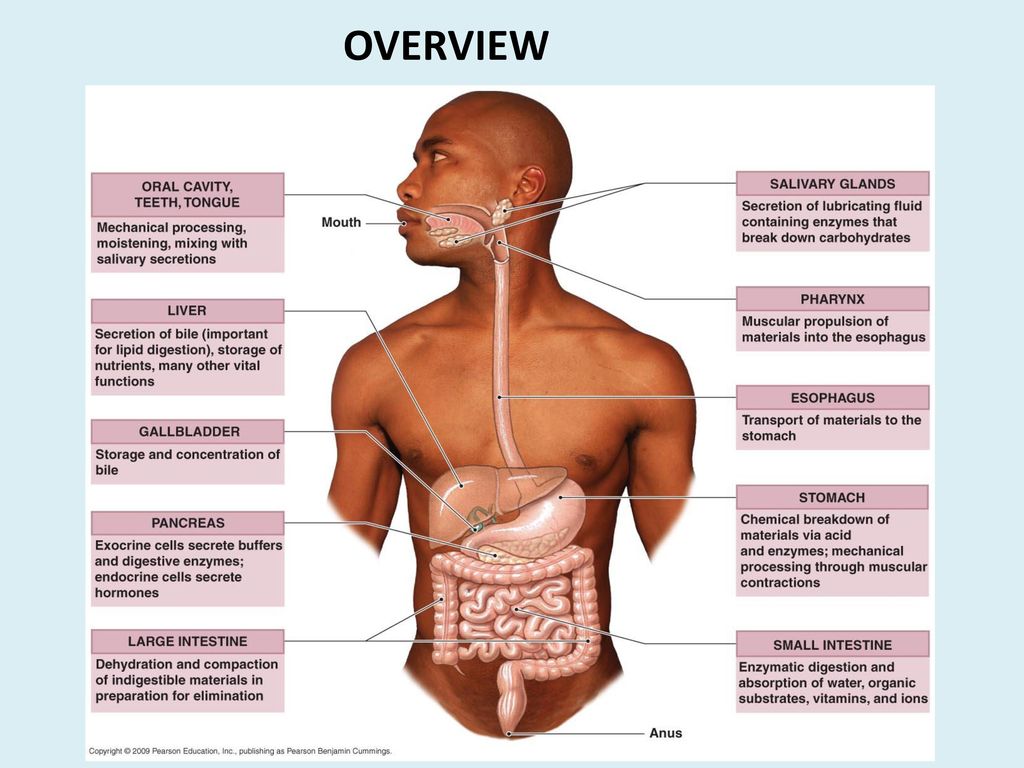
What can affect the level of adrenocorticotropic hormone in the blood
It should be borne in mind that the phase of the menstrual cycle, pregnancy, emotional state, pain, fever, physical activity, surgical interventions affect the level of ACTH.
Preparation
Rules for preparing for the test for Adrenocorticotropic Hormone
On the eve of the test, it is necessary to exclude physical activity (sports training) and alcohol intake. Within an hour before donating blood, you must refrain from smoking. In women, the analysis is performed on the 6-7th day of the menstrual cycle, unless other dates are indicated by the attending physician. If there are no other special instructions from the endocrinologist, blood sampling is preferably carried out in the morning on an empty stomach, after an 8-14-hour overnight fasting period (you can drink water). Additional samples taken in the evening (preferably not earlier than 4 hours after the last meal) may be useful in the diagnosis of Cushing’s syndrome. For a correct comparison, in order to control the dynamics of the indicator, the samples should be taken at the same time of day.
For a correct comparison, in order to control the dynamics of the indicator, the samples should be taken at the same time of day.
Indications for prescription
In what cases is a blood test for Adrenocorticotropic hormone performed:
Interpretation of results
Interpretation of test results contains information for the attending physician and is not a diagnosis. The information in this section should not be used for self-diagnosis or self-treatment. An accurate diagnosis is made by the doctor, using both the results of this examination and the necessary information from other sources: history, results of other examinations, etc.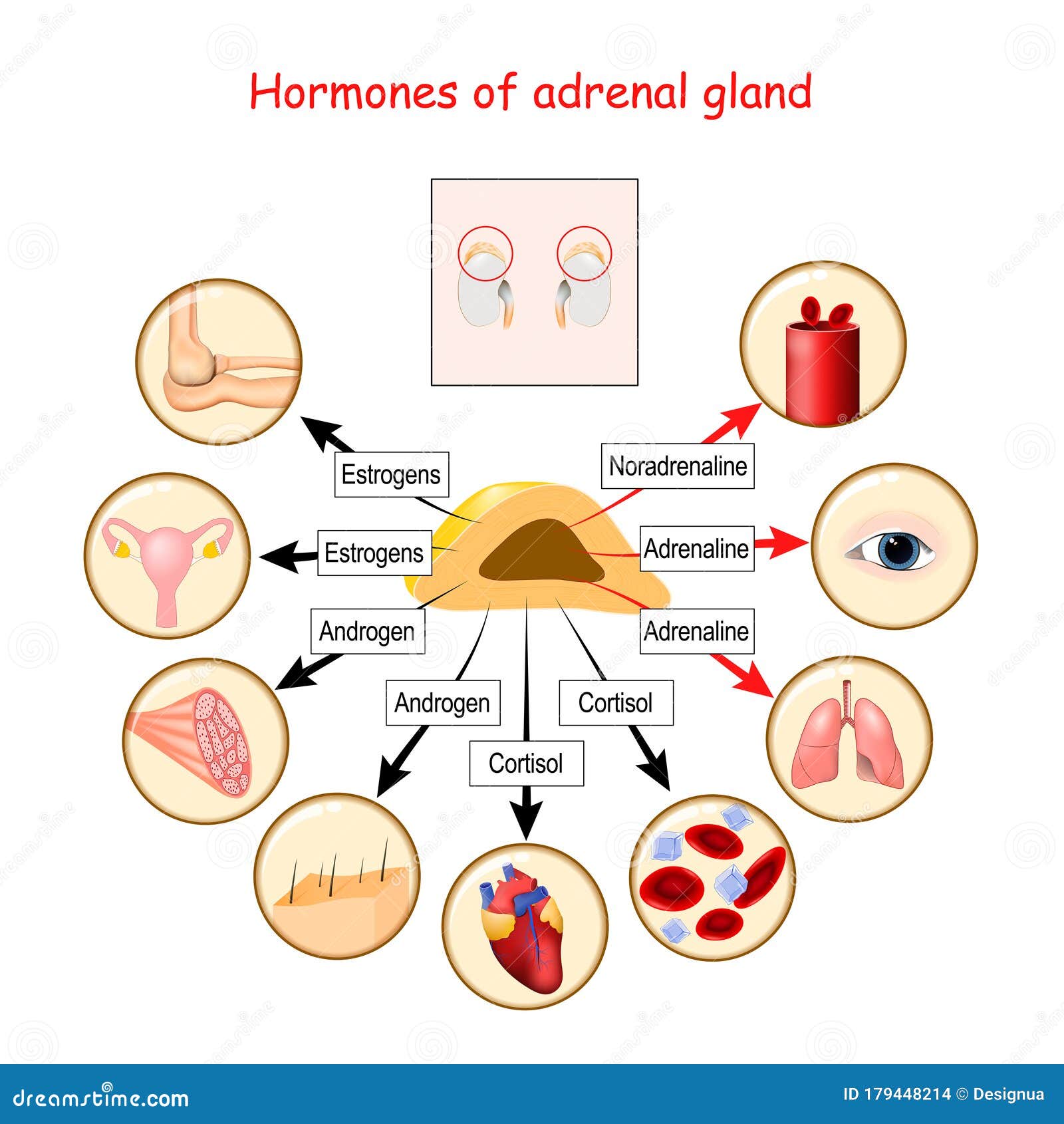
Units: pg/ml.
Alternate units : pmol/l.
Conversion factors: pmol/l x 4.541 => pg/ml.
Primary Adrenal nic insufficiency (> 1000 pg / ml).
Decreased values
Questions
and answers
{{{this.PREVIEW_TEXT}}}
Did the answer help you?
{{/each}}
In this section you can find out how much it costs to complete this study in your city, read the description of the test and the table for interpreting the results. When choosing where to take the ACTH (Adrenocorticotropic Hormone, Corticotropin, Adrenocorticotropic Hormone, ACTH) test in Moscow and other cities of Russia, do not forget that the price of the analysis, the cost of the biomaterial taking procedure, the methods and terms for performing studies in regional medical offices may differ.
When choosing where to take the ACTH (Adrenocorticotropic Hormone, Corticotropin, Adrenocorticotropic Hormone, ACTH) test in Moscow and other cities of Russia, do not forget that the price of the analysis, the cost of the biomaterial taking procedure, the methods and terms for performing studies in regional medical offices may differ.
Insulinoma: symptoms, causes, survival
Pancreatic neuroendocrine tumors are quite rare and represent 1-2% of all pancreatic neoplasms. Insulinoma occurs in 1-4 people per million in the general population. 3 Diagnosis by insulin is a difficult task for an endocrinologist.
What is insulin and insulinoma?
Insulin is a hormone produced by the pancreas and is involved in the regulation of glucose metabolism in the body. This is the only hormone whose action is aimed at lowering the level of sugar (glucose) in the blood. It involves glucose in many ways it is absorbed by the cells of the body, as a result of which blood sugar levels decrease.
Insulinoma is a tumor consisting of beta cells of the pancreatic islets that secrete the hormone insulin into the bloodstream, which lowers blood glucose levels. Insulinoma is more common in women than in men. The occurrence of a tumor is possible at any age, but usually the peak occurs at the most able-bodied age: from 30 to 55 years. Less than 2% of the insulinoma may be located outside the pancreas, most often in the wall of the duodenum. At 85-9In 0% of cases, insulinoma is benign, but in 10-15% of patients it can become malignant and metastasize.
Pancreas: Anatomy and Functions
The pancreas is an organ of the digestive and endocrine systems located behind the stomach. This organ consists of the following structures: 1
Pancreas and its parts
The main part of the gland (exocrine) is responsible for the production of enzymes necessary for the digestion of food in the intestinal cavity, so the excretory ducts of the gland open into it and secrete the juice necessary for digestion. Another component of the pancreas (endocrine part) consists of pancreatic islets (islets of Langerhans), where important hormones are produced – insulin and glucagon. They are released directly into the bloodstream. After eating, the level of glucose in the blood rises. This process triggers the secretion of insulin by the beta cells of the pancreas.
Neuroendocrine tumor of the pancreas
Neuroendocrine cells on the one hand are similar to the cells of the nervous system, on the other – to the endocrine cells that produce hormones. 1 These cells are located in various organs. A neuroendocrine tumor of the pancreas (NEPT) is a heterogeneous tumor composed of neuroendocrine cells of the pancreatic islets. One of the varieties of such a tumor is insulinoma.
One of the varieties of such a tumor is insulinoma.
Neuroendocrine tumor of the pancreas
In 70% of cases of NEO, the pancreas is an insulinoma. 1 It can be not only single, when tumor cells are grouped in one place, but also multiple, when there are several tumor foci in the organ. Much less common are other types of neuroendocrine tumors of the pancreas, the name of which corresponds to the hormone produced by tumor cells:
Neuroendocrine tumors of the pancreas are divided into two types: functioning and non-functioning.
Causes of insulinoma and risk factors
The causes of insulinoma are divided into modifiable, that is, which a person can change (remove/reduce) and non-modifiable (unchanged), which cannot be influenced.
Modifiable risk factors:
Unchangeable risk factors:
Heredity – the presence of hereditary syndromes in which mutations occur in genes that are transmitted from parent to child:
Insulinoma symptoms
Pancreatic neuroendocrine cell tumor symptoms in humans are caused by an increase in the amount of insulin in the blood and a decrease in the level of glucose in the blood – a hypoglycemic attack. Such attacks occur after prolonged fasting and are episodic. This is due to intermittent secretion of insulin by the pancreatic tumor. 3 The clinical manifestations of insulinoma are mostly neurological in nature, since glucose is the main nutrient for the brain. This condition is characterized by the following symptoms:
When blood sugar becomes very low, it can lead to more severe symptoms such as loss of consciousness, coma and seizures.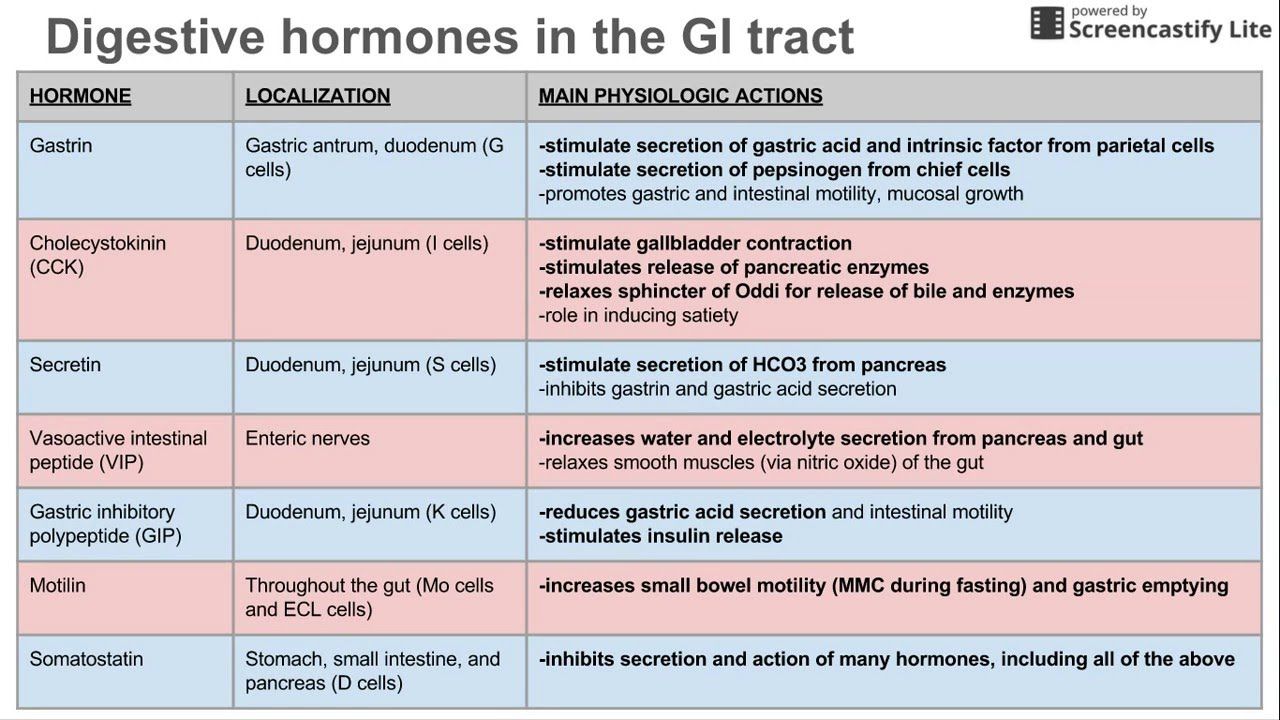 1 Patients with insulinoma are characterized by Whipple’s triad – a complex of 3 symptoms necessary for the diagnosis of insulinoma:
1 Patients with insulinoma are characterized by Whipple’s triad – a complex of 3 symptoms necessary for the diagnosis of insulinoma:
Malignant insulinomas have additional symptoms: weight loss, diarrhea, abdominal pain.
Insulinoma of the pancreas in children
Insulinoma of the pancreas in children presents with the same symptoms as in adults. However, children are diagnosed with insulinoma extremely rarely: they account for about 5% of the total number of patients. Basically, this disease affects people from 30 to 55 years.
Insulinoma in children in some cases is accompanied by nesidioblastosis. Nesidioblastosis is a congenital disease caused by hyperplasia (a change in the tissue of an organ due to an increased number of its constituent cells) and / or hypertrophy (an increase in the volume and size of cells) of beta cells of the pancreatic islets. The consequence is severe hypoglycemia with convulsions and loss of consciousness. Symptoms of nesidioblastosis can appear at any age, but are most commonly seen in children.
The consequence is severe hypoglycemia with convulsions and loss of consciousness. Symptoms of nesidioblastosis can appear at any age, but are most commonly seen in children.
Classification of insulinoma
The classification of insulinoma is based on the principle of division by degrees:
Grade 1 and 2 insulinomas are called neuroendocrine tumors of the pancreas. They are characterized by slow growth and spread to other organs. Grade 3 insulinomas are called neuroendocrine carcinomas of the pancreas. They are aggressive, characterized by accelerated reproduction and spread to neighboring organs. 1
1
Stages of neuroendocrine tumor of the pancreas
In addition to the classification of NEO pancreas by degrees, there is its division into stages in order to determine the level of spread of cancer in the body and the choice of treatment tactics. 1 The most commonly used staging system is the American Joint Committee on Cancer (AJCC)1 TMN staging system, according to which: 5
The letters T, M, N are followed by numbers or letters. Higher numbers mean the cancer has advanced further. 1 Next, the doctor synthesizes information about the above three positions together, analyzes and gives the result – the stage of cancer.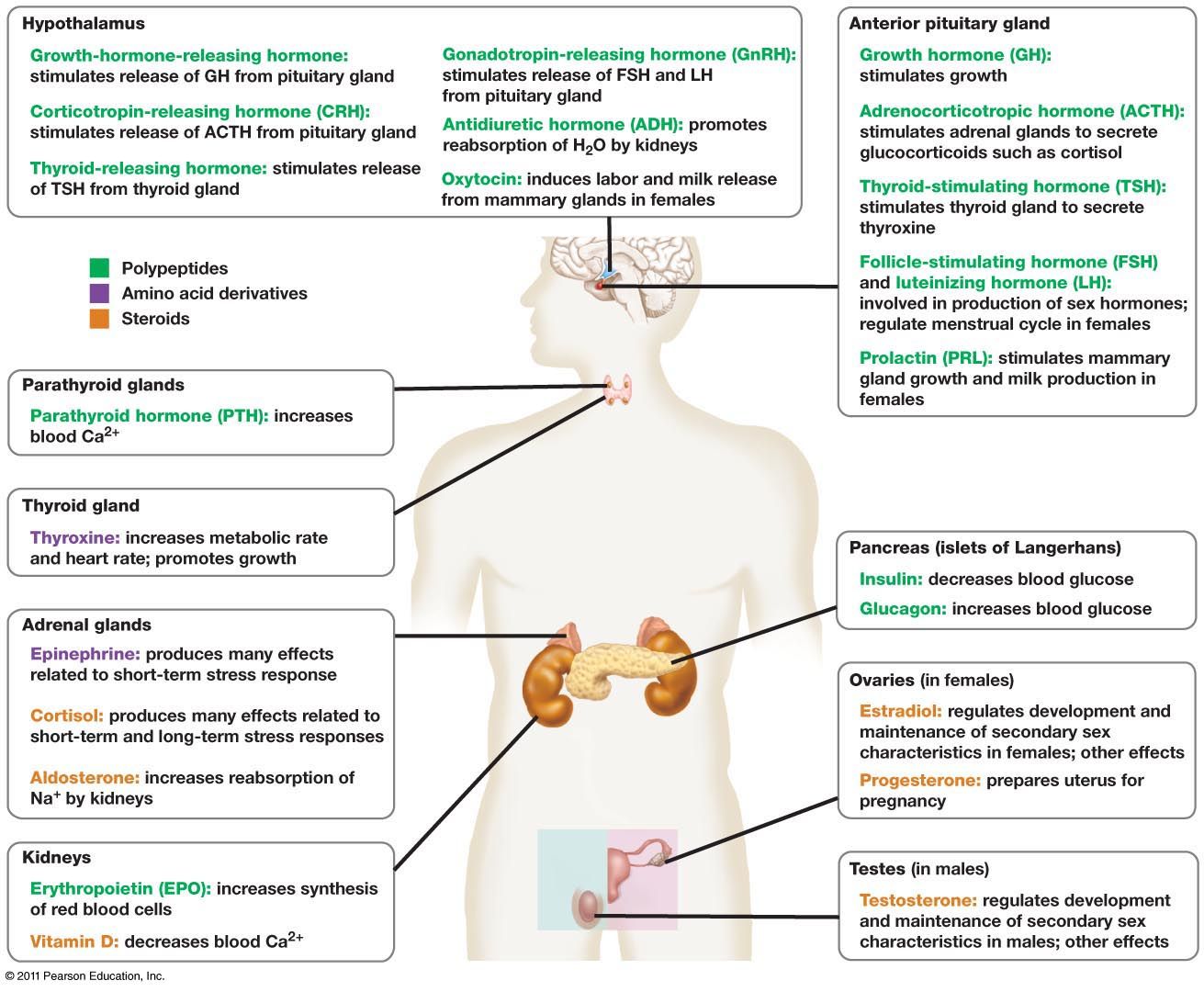 Stages of NEO of the pancreas vary from I to IV. The lower the stage, the less the cancer has spread.
Stages of NEO of the pancreas vary from I to IV. The lower the stage, the less the cancer has spread.
Prognosis for insulinoma
The prognosis for patients with insulinoma depends on the stage of the spread of the tumor process, the degree of the tumor, and its function. The prognosis of life expectancy in many diseases, including insulinoma, is determined using the five-year survival rate. Five-year survival is the percentage of patients who live at least 5 years after diagnosis. This indicator is calculated depending on the stage of cancer spread: 1
The table shows the relative survival of patients diagnosed with insulinoma depending on the stage of tumor spread:
NEO RV | 5-year relative survival |
|---|---|
Localized | 93% |
Regional | 77% |
Remote | 25% |
The patient’s age, general health, body response to therapy also have a great influence on the prognosis of the disease.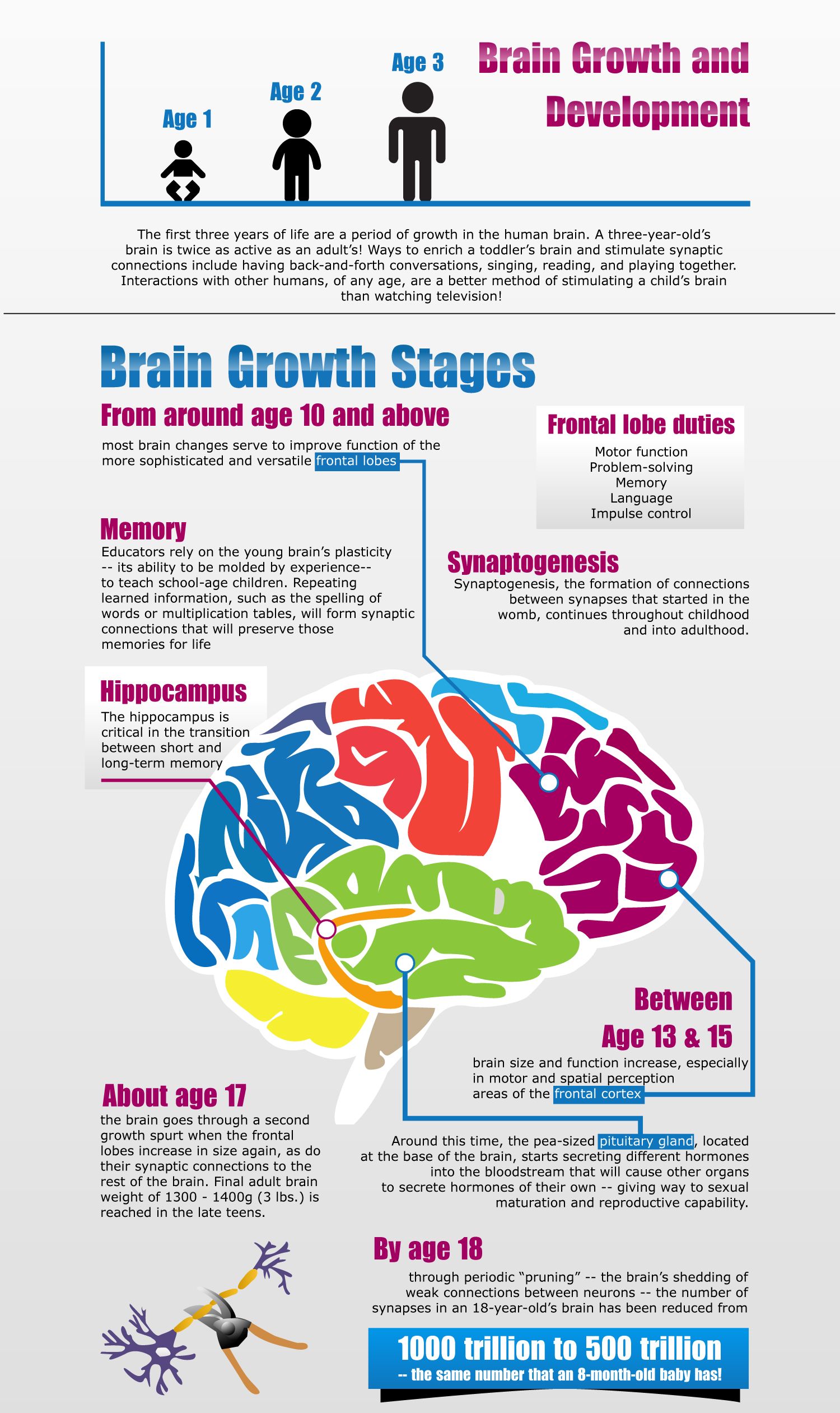
Survival in insulinoma depending on the malignancy of the tumor 5
Modern diagnostic methods make it possible to diagnose at an early stage and start timely treatment, which improves the prognosis and influences the course of the disease.
To summarize, an insulinoma is a tumor from the pancreatic islets of the pancreas that secretes excessive amounts of insulin. An excess of insulin in the blood leads to hypoglycemia and neurological symptoms. Most often, the disease is benign in nature, but it is necessary to remember about the likelihood of insulinoma degeneration into a malignant form. Prevention of this disease can be carried out by eliminating the risk factors for developing the disease and adhering to a healthy lifestyle. Early diagnosis and timely treatment improve the prognosis of the disease and increase the life expectancy of patients.
The article is for informational purposes only. To make a diagnosis, you should consult a specialist.


 View of a practical oncologist. Laboratory justifications.
View of a practical oncologist. Laboratory justifications.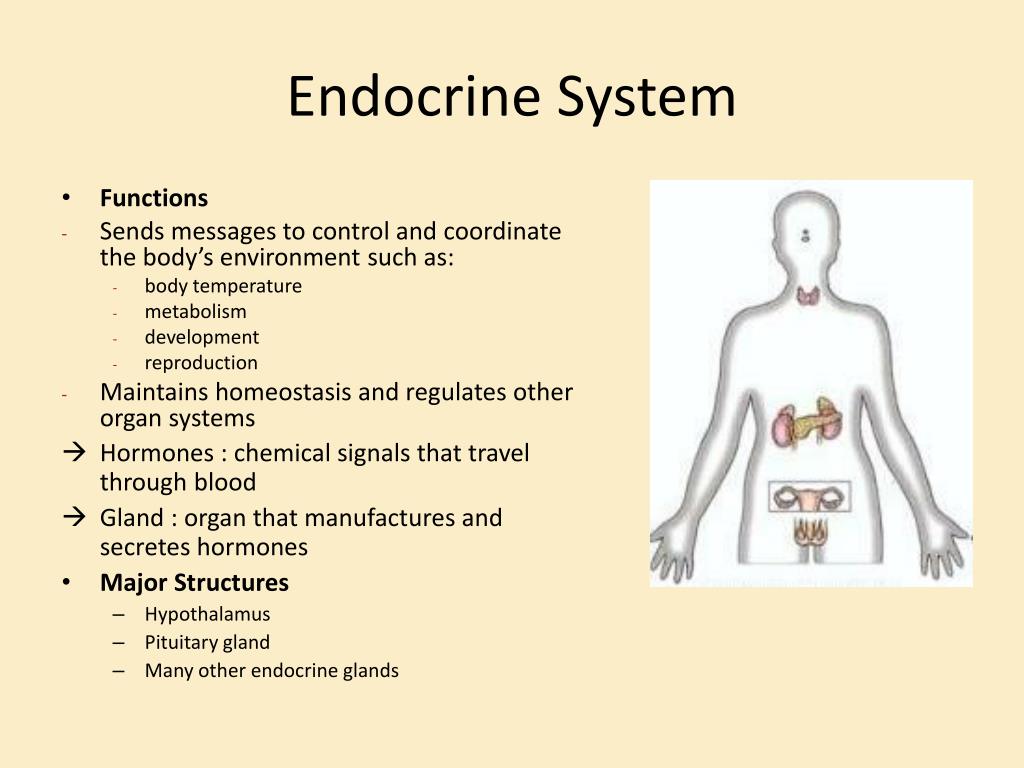 Located near the spleen.
Located near the spleen. In 70-80% of such cases, the tumor process is already running and metastases are found in other nearby organs and tissues, most often in the liver. 2
In 70-80% of such cases, the tumor process is already running and metastases are found in other nearby organs and tissues, most often in the liver. 2  Chronic pancreatitis itself can be caused by excessive alcohol consumption, therefore, avoiding alcohol can reduce the risk of this disease and, as a result, insulinoma.
Chronic pancreatitis itself can be caused by excessive alcohol consumption, therefore, avoiding alcohol can reduce the risk of this disease and, as a result, insulinoma.